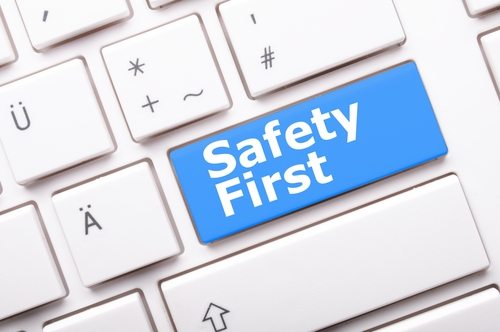[ A guest post by Bob Hand ]
 We love to share. Many of us share our interests and experiences with anyone who will listen on Facebook or Twitter.
We love to share. Many of us share our interests and experiences with anyone who will listen on Facebook or Twitter.
In fact, the media often criticizes millennials for fostering a “culture of oversharing”. Criticisms of social media are surely the continuation of some sort of generational warfare. “Those darned millennials and their selfie-sticks, and their skateboards, and their crazy straws — and etc., etc.”.
But if there is one valid point to this criticism, it is the fact that social media can expose you to identity theft.
Identity theft is committed when someone gathers information about you, then uses your information to impersonate you for fraudulent purposes. According to statistics, about 7% of the population — 17.6 million Americans — are likely to have their identity stolen each year. About half of all instances resulted in a loss of $100 or more. Four out of five cases are internet-related.
How does social media put you at risk?
Consider what most users share on Facebook or Twitter: information about hobbies, likes, political beliefs, and religious beliefs. Consumers tell anyone who they might be friends with or who they are related to. They reveal where they work, shop, and live. Social media sites have access to all of this information, and it is shared freely with companies to personalize which advertisements you see.
Your information is also accessible to people with more malicious intent.
Social media platforms are goldmines for cybercriminals; the information that you provide can give them the necessary keys to impersonate you and commit fraud. They will usually target individuals with high credit ratings. They are frequently successful at determining account passwords by searching social media for children’s names, pets’ names, or details about where targets work/live.
Less scrupulous users can give criminals an even easier route: When fraudsters send friend requests to targets, they are often looking to send them links to install malware. They usually spoof people who the target may already know. People who accept these friend requests may be allowing criminals to have instant access to their personal and banking account information.
An especially disgraceful form of identity theft using social media is known as “ghosting”. Ghosting involves stealing account information or opening new accounts using information often found on deceased users’ social media accounts. The identities of 2.5 million deceased Americans are stolen every year. Thieves may choose a target that is approximately the same age as themselves, so that they can impersonate them. Criminals in the past have successfully received passports, Social Security benefits, and new credit cards by using his tactic.
How can you protect yourself or loved ones online?
There are several steps you can take to protect yourself and your family. You should not access sensitive information — including social media — on any computer that does not have antivirus software. When accessing accounts on a mobile device, there are several precautions to take, which can be found here.
Be careful who you share your updates with. Before sharing anything online, change your privacy options to limit who can see your profile or posts. Privacy settings vary from site to site, and sites like Facebook are frequently updated to include more options. Do not accept friend requests from strangers. When you do accept a friend request, ensure that you are not friending an imposter; check their profile for anything fishy, and call them to verify the profile is truly theirs. Do not respond to messages sent from suspicious accounts.
Information that you should never share on social media includes your Social Security number, phone number, address, birth date, or place of birth. None of your passwords should include words found on your profile page. You should also never let people know when you will be away from home for a lengthy period of time, such as when you will be vacationing or out-of-state; personal documents could be stolen for identity theft, or you could be setting yourself up for an old-fashioned burglary.
When trying to prevent ghosting, accessing a family member’s digital assets after death can be a hassle. Facebook has a contact form titled “Special Request for Deceased Person’s Account”, and Twitter has a similar form here. Consider any other sites that the deceased individual may have posted personal information on, and have them closed. These should be filled out as soon as you have a death certificate. Such sites can be used to memorialize your loved ones, but any personal information should be limited. This will minimize the chance that their identities could be compromised.
Stay Alert
There is no shortcut to protecting your identity online. Security should be of utmost concern at all times. Keep an eye on your credit rating, and investigate if anything changes drastically. Be wary of what you share online and who you share it with. Further tips on protecting yourself online can be found here.

